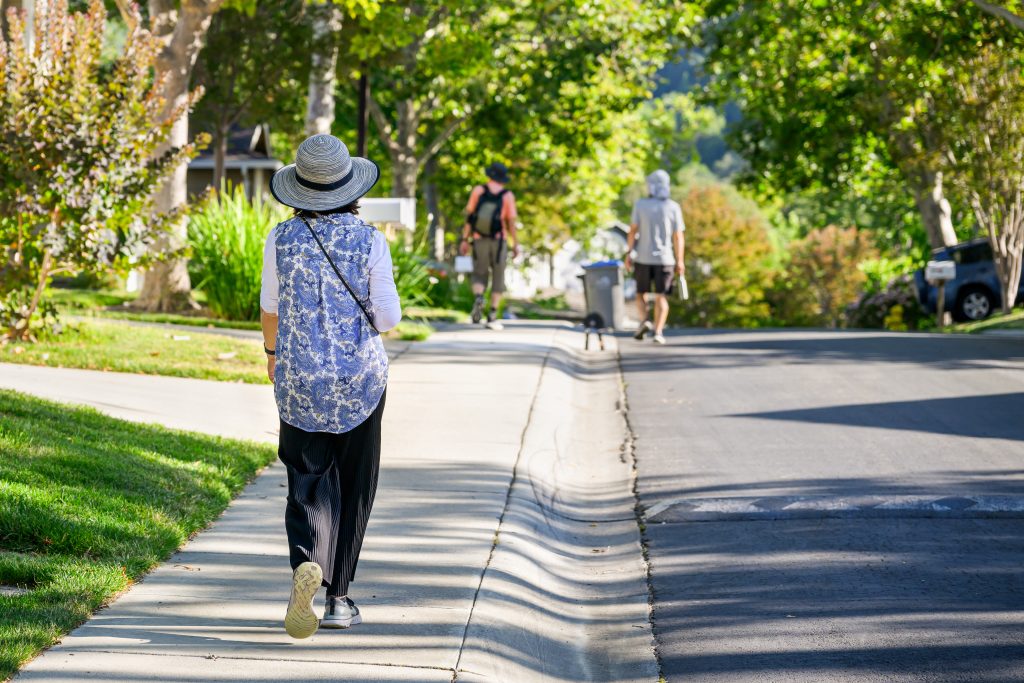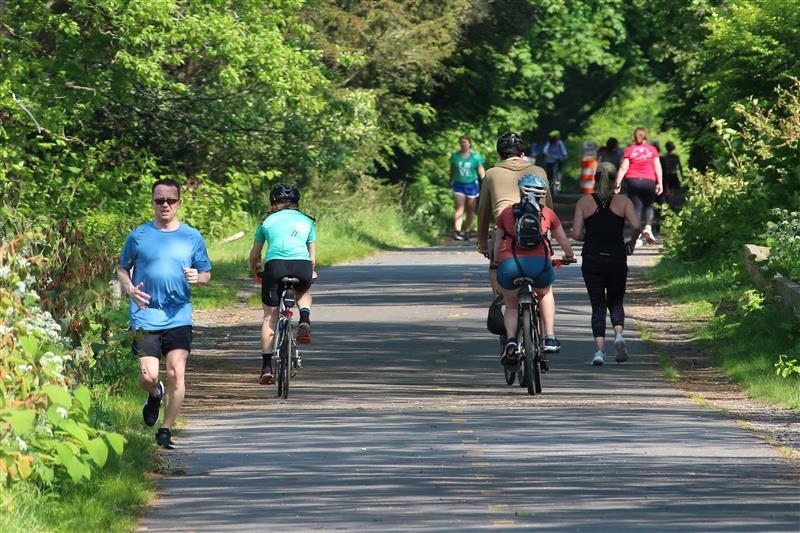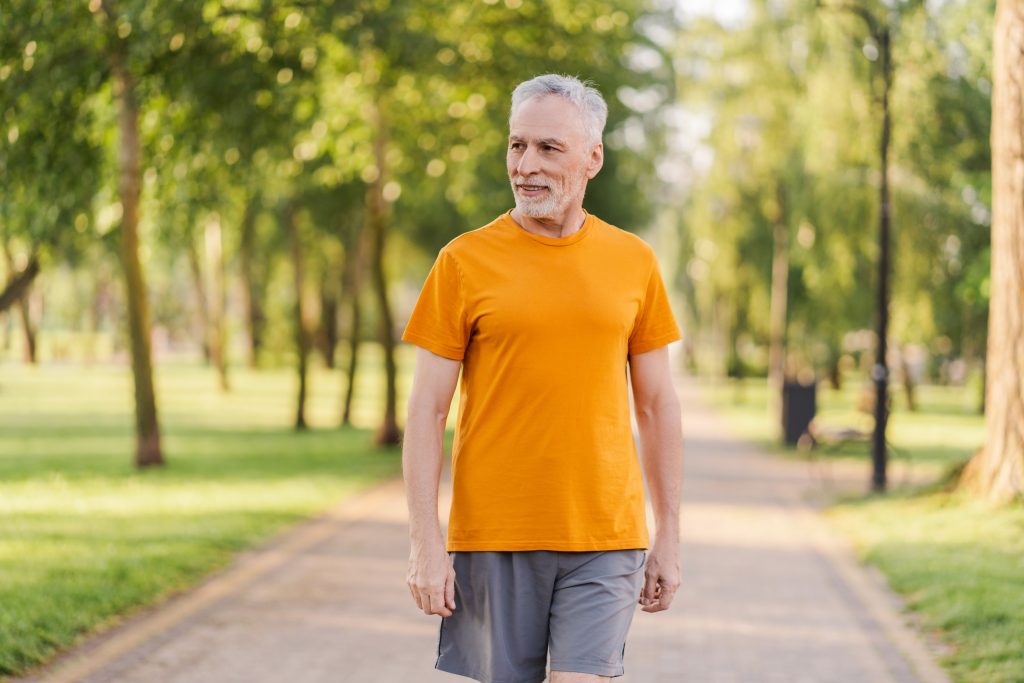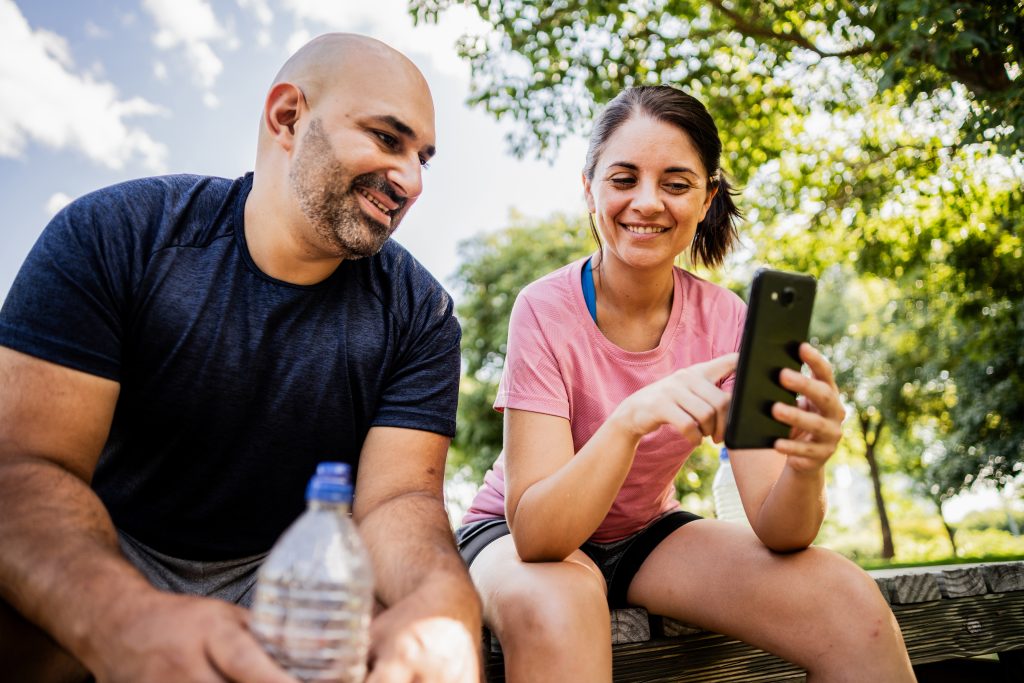Guide to Pedestrian Safety
It’s no secret that the benefits of walking extend beyond burning calories. Despite the activity being low-impact, walking can promote better heart health, build lower body muscle strength, reduce the risk of chronic disease, and boost mental health. It’s also an accessible form of exercise that doesn’t require any special equipment or a gym membership.
That said, as most things in life, safety is always a factor, whether you’re walking around your neighborhood, through a bustling city, or out on the nature trails. Ahead, we outline nine safety tips to ensure your walks are as safe as they are enjoyable.

Walk Facing Traffic
If there is no sidewalk, always walk on the side of the road facing oncoming traffic, as far from traffic as possible. In the United States, this is always the left side of the road. Walking toward opposite traffic maximizes visibility for both parties — you can see the oncoming car as it approaches, and the oncoming car can see you.
Remain Single File
A sidewalk is your safest option, but if you must walk on the road, always walk single file. This is especially important when venturing on roads with hills and/or curves.

Stay Vigilant
Pay attention to your surroundings, whether its cars, trucks, bikers, runners, or other walkers. Don’t count on others to pay attention to you.
Avoid Distractions
In the same vein as staying vigilant, put down the distractions. Don’t stare at your cellphone or smartwatch and be cautious when using headphones. If you do want to listen to music or an audiobook, keep the volume down so you can still hear bells, horns, and other warnings. It’s crucial to keep your eyes and ears on the road to stay safe.

Be Visible
If you’re walking during the day, wear bright colors. When walking at dusk or night, do your best to walk in well-lit areas and opt for a reflective vest or jacket to increase your visibility. Carrying a flashlight or wearing a headlamp is another great option when in doubt.
Follow Traffic Signs
As easy as it may seem to jaywalk, don’t — always cross the street at marked crosswalks and intersections. Follow pedestrian signs and, yes, look both ways before you cross the street. This is especially important when crossing a multilane road with turning vehicles, since you can’t assume every vehicle will stop (even if you have the right of way).

Know Your Limits
Walking is great exercise but know your limits. Always carry water and a cellphone and be mindful of your body. If you ever feel weak, dizzy, or confused, cut your walk short and call for help. It’s important to know what to do in heat emergencies — especially during the summer months. Don’t overexert yourself.
Stand Ready to Protect Yourself
In addition to water and a reliable cellphone, carry accessible protection devices, such as pepper spray, a whistle, personal alarm, or tactical flashlight, in case of an emergency.

Research the Route
Know where you’re going and do your best to walk in well-lit, well-populated areas. Avoid remote stretches of the road or trail and always let someone know when and where you’re going. If something or someone feels off, go with your gut and take the necessary precautions to get away and near other pedestrians.
Staying hydrated is important, but it’s even more crucial if you plan to exercise outside. Check out our top hydration tips.
© 2025 Texas Farm Bureau Insurance



